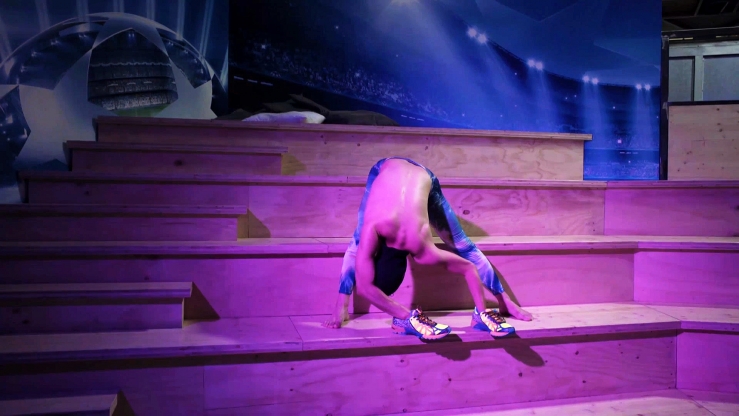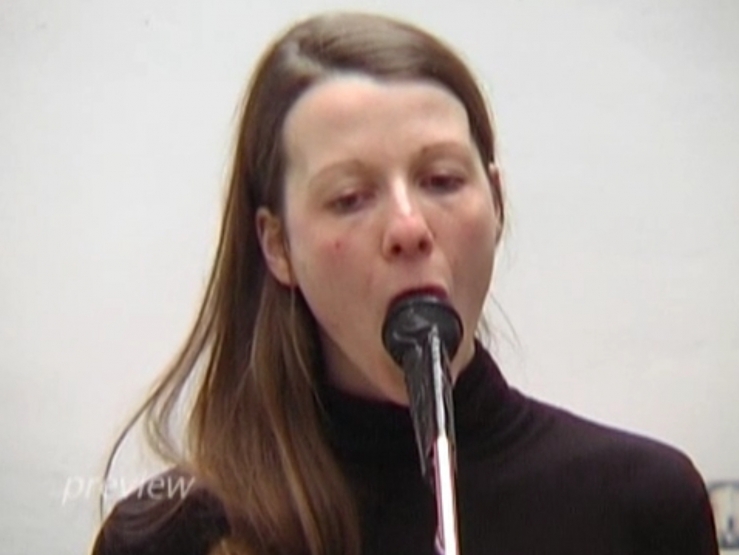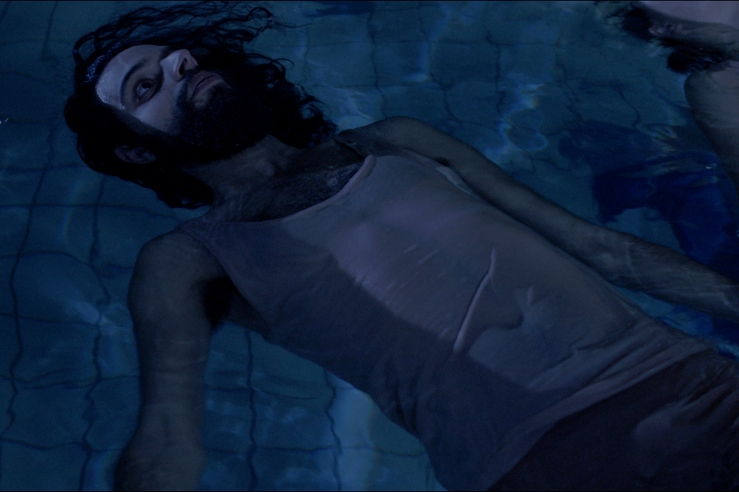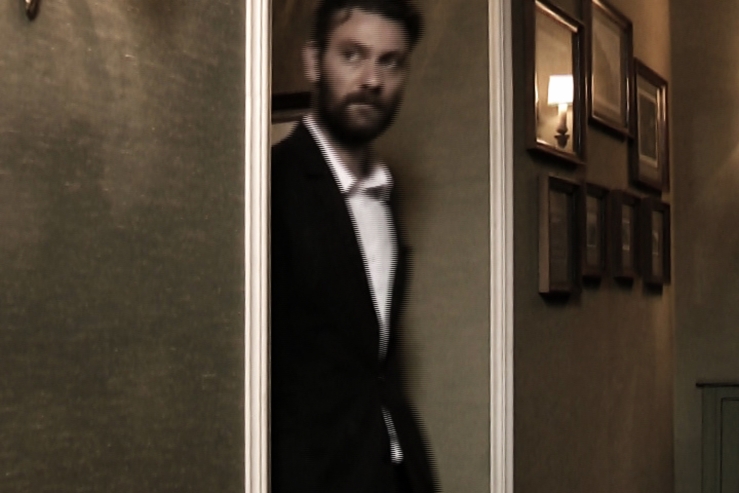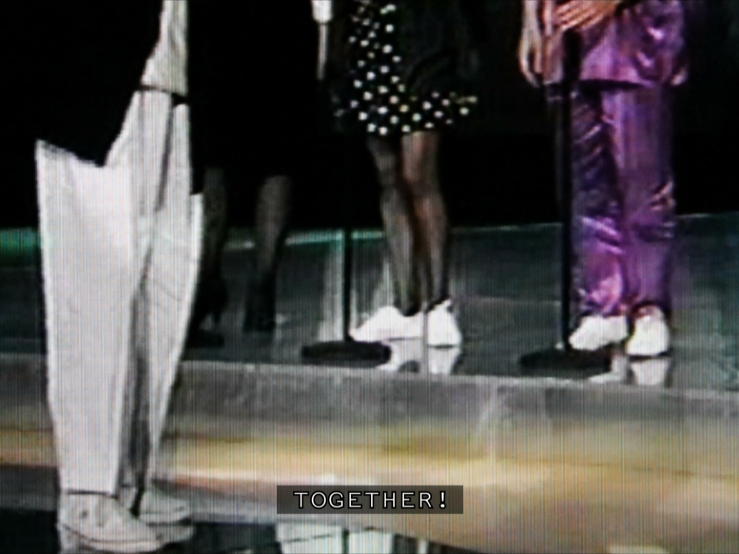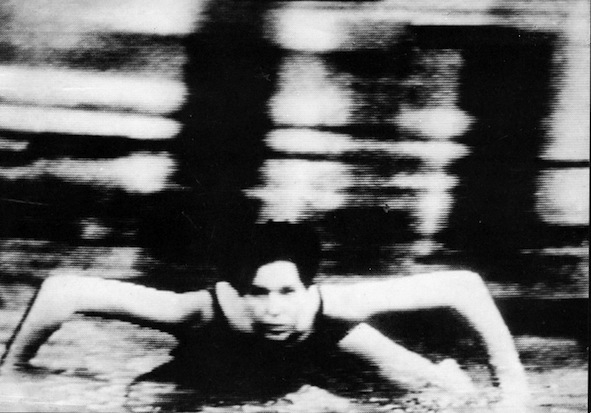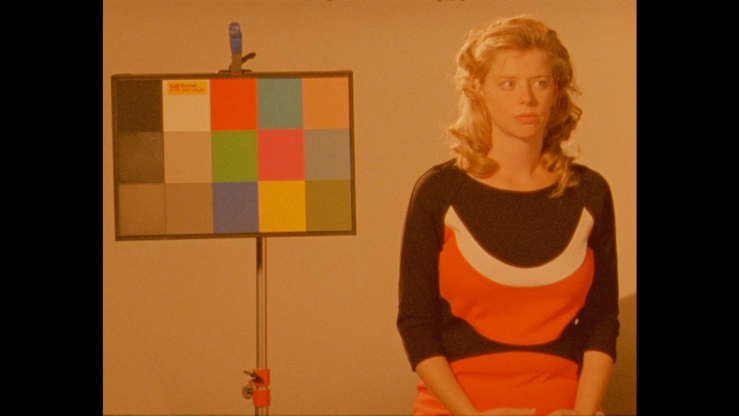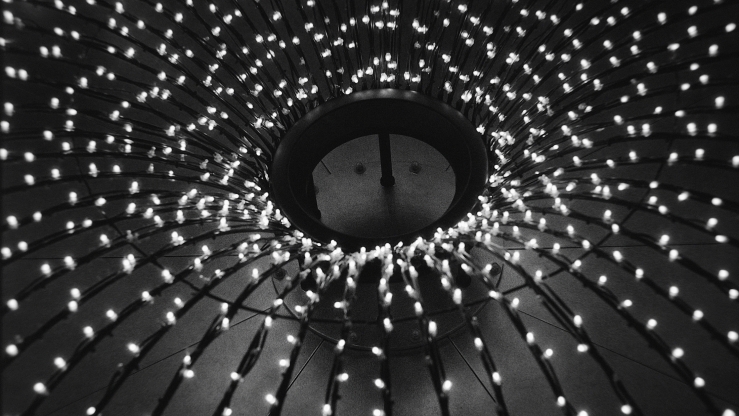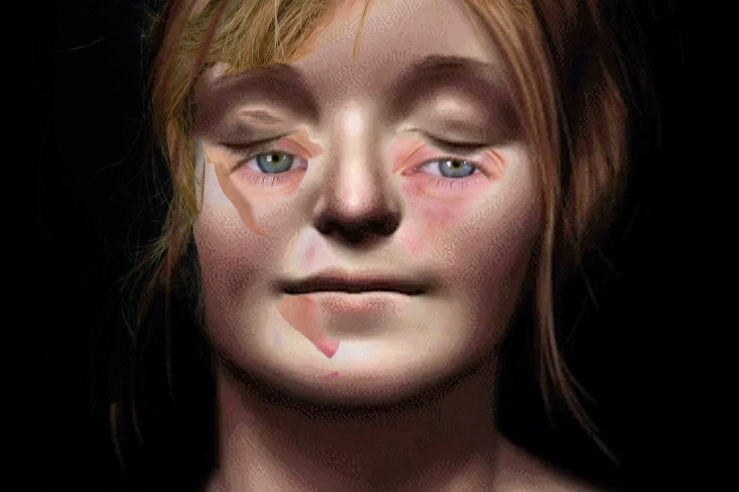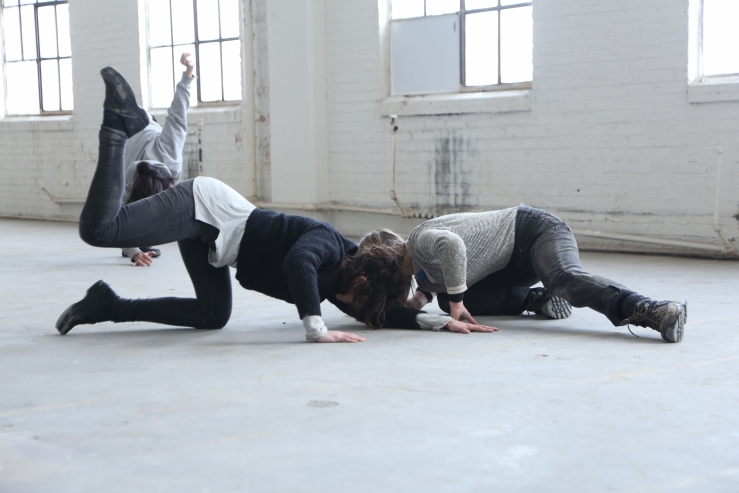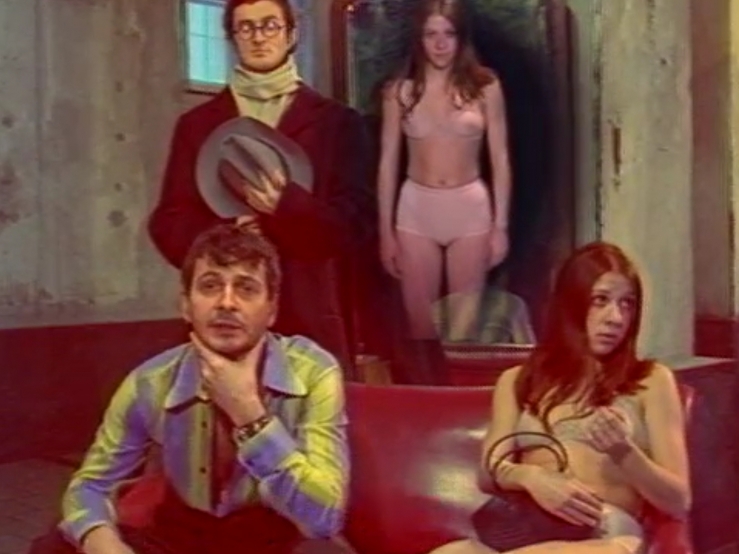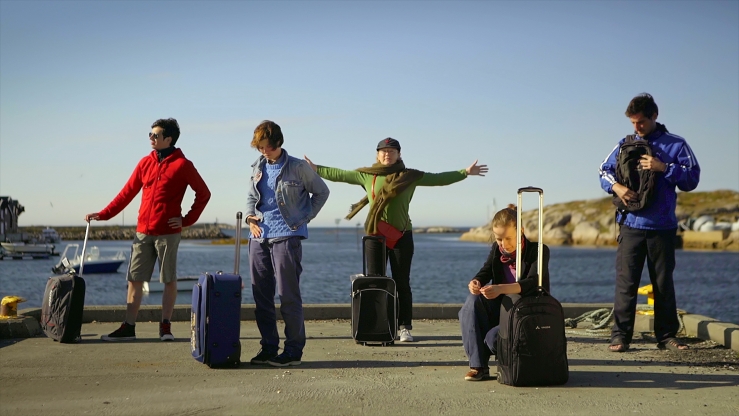Performativity
'Repeat, Relate – Reflections on the ongoing performativity of video works as a form of cultural-analytical narration' by Sigrid Adorf
Forty years ago, the then new medium of video was thought capable of »starting where television stops,« as the group telewissen phrased it in 1976: »We show how people speak with people through video, how they can come to a better understanding of each other through the new medium,« they stated, »we want to use it, because we are sick and tired of others determining what we should see, hear, and feel. In the future, we will determine that ourselves.«[1] The linguistic gesture is impressively simple. The future that these lines address(ed) is supposed to have long since arrived, and in technological terms it has. But whether the so-called social media lead to more self-determination and better understanding remains controversial. One can easily accuse the technophile hopes of the 1970s of being naïve. But perhaps the question we should ask instead—to take up Walter Benjamin’s faith in the ability to hear calls of the past—is whether we overhear something when we judge the hopes of past times using their technological redeemability as a yardstick.[2]
Viewing the old videos today conveys a peculiar crossing of times. Their historical index is unmistakable in terms of video technology, fashion, and social expression, but they cannot be denied a lasting presence. In the recording, the young people of the time do not age. Therefore, the way they address a gaze concretely and also indirectly, the way they speak to the viewer remains ›timeless‹.[3] It is this interlinking of past (as a fact) and present (as an event) that I understand as their performativity—as an interleaving of representation and affect.[4] As Amelia Jones pointed out in regard to the significance of documents for Body Art in the 1970s, the performativity of (live) recordings is based on the intersubjectivity that arises between performers and audience, both in the situation of the performance and the subsequent viewing, which can take place years later.[5] For Mieke Bal, video installations, in particular, offer a possibility to reflect upon the interrelations between subjects and images, in short, subjectifications, and their relation to the representation and perception of time:
Among memory’s toys a particularly relevant one is time. Time is where subjectivity is produced: over time, in time, with time. […] Indeed, in the kind of video installations I have in mind, performance is foregrounded as the tool of performativity. This results in a hyperbolic theatricality that, it appears, sticks in my body memory.[6]
Many current works appear to utilize the play space outlined by Bal in a way reminiscent of video works from the 1970s—a form of reminiscence I find informative in that it reminds us today of questions raised at the time, albeit under different conditions. Whether deliberately or not, these works take up the early video discourse and its proximity to performance art, once again negotiating the relationship between performers and audience along with the ability of the medium to constellate them in time, as well as questions having to do with the attachment to body memory. Through the increasing availability of archival moving images on the internet, from private recordings to specialized collections, the engagement of young artists with image worlds of their childhood and youth has increased just as much as the (re)discovery of early video and performance pieces—with not only the aesthetic interest in forms of re-enactment bearing witness to the fact that it is about the experience of (hi)stories, the experience of the continued existence of stories, their persistence, and their potential to be rewritten and transformed.[7] Aesthetic experiences the way they are dealt with here are not based on the concept of an ahistorical phenomenology of presence, then, but quite to the contrary on the reality of a historically graspable, perceiving body whose medium consists in stories—those it was told, those it can hardly remember, those that touch it, that it has experienced, that it can tell of, that it will give an account of in the future.
In three short steps and based on a selection of three works from the current Videonale program, I would like to address the question of where these works appear to have ›listened‹ to earlier ones and what they repeat and therefore relate.
»This world of experience«
»Let me welcome you here in this world of experience, this beautiful haven of experience, heightened by the presence of the other«—a performer in a pink, high-necked, satin blouse with garishly painted lips, the wavy hair combed to the side in the style of the 1930s, invites me/us: »Here you can experience, here you can be part of us, here you will be truly engaged. Without the inconvenience of being spat upon in the street or the unpleasant smells of the darkroom«[8] —Vika Kirchenbauer’s 13-minute ›speech‹ YOU ARE BORING! challenges me/us with attributions, exposures, allegations regarding my/our desire to look at bodies of transpersons in an art show and consume the glamor of queer subculture. The positions of looking and being looked at are negotiated in the frame of an art-enjoying discourse that presents itself as at once enlightened, critical, and difference-theoretically exhausted, and which regards the theorizing of affects, materiality, and nonhuman concepts of reality as an escape route from the overemphasis on language and questions of subjectification.[9] »The driving experience, the pumping experience, the reading experience […] the cooking experience, the eating experience […]«—while a calm voice recites a list of experiences whose mundanity is meant to address situations everyone is familiar with, two performers are shown whose faces appear to be urinated on from the top right. The contrast disturbs the comfort zone of an emphatic notion of experience and provokes the question as to which and whose experiences the aesthetic discourse is actually talking about. Three performers speak of the consumability of their (self-)representation: »whatever you want darling, because we know that you have either the economic or the educational capital to consume us, ideally both«. A rhythmic clapping, which couldn’t be identified at first, turns out to be the sound of a hand spanking a naked butt; the words »your ass is out of character, I’m sorry but it ruins the integrity of the performance« interrupts the didactical air of the spoken passages. The video presented in 3D and thus intensifying the hallucinatory presence of what is shown, continues with this alternation between communicative explanations and challenging gestures. Once again, like in the 1970s with Vito Acconci or Lisa Steele, for example, viewers are explicitly addressed as ›you‹.[10] They are prompted to a form of relationship work between seduction and defense that has an ›appealing‹ effect in both senses of the word, meaning that it becomes effective, for the resulting intersubjective dynamism is basically comparable to the efficacy sought in psychoanalysis between the silent analyst and the speaking patient, even though the intention here is not therapeutic but critical.[11] As I have elaborated elsewhere, the video was used by feminist artists in the 1970s not only to make the performative assertion of »I say I am.«[12] Moreover, as I have argued following Chris Straayer, the works were a fundamental reflection on the (im)possibility of freeing oneself from the position of ›to be looked at’ness‹ and make oneself the subject of a responding gaze—a reflection continued in Kirchenbauer’s work and attaining urgency because she reformulates it with regard to neoliberal concepts of the subject and their usurpation of resistant practices.
In the selfie culture of digital media, the question as to the encounter between viewer and performer shifted to the media also insistently arises outside the field of art. Here, too, the (im)possibility of self-assertion in the image is at issue—whereby questions of control and loss of control quickly reach dimensions different than in the comparatively protected context of art.
»I am here! I exist!«
The authorities in charge of security have sent an official mail via Interpol to the Management of Facebook to detect the movements of groups who manage their own pages. The Cyber Police have in turn, proceeded to open an inquiry about this phenomenon, in order to determine the motivation behind this virtual movement. They concluded by identifying some suspects who show unusual lifestyle habits and try to imitate the children of the wealthy.
The English subtitles of the opening credits of the film The Park (2015) by Randa Maroufi introduce us to the theme: Young people in Morocco seek to create free spaces to present themselves via Facebook and must fear repression by the state’s security forces. The Park shows groups of youths, mostly young men, in a disused amusement park from the 1960s/70s where they meet to spend time together, pose with dummy sword knives, and stage violent scenes captured with their smartphones and shared on Facebook. In this brief form, the subject matter appears familiar, but one has difficulties saying that the film is about the youths in this park. To say that it shows them is not quite correct either, since it does not seem to be about showing the youths, or maybe it is, but not the youths as such. It is instead concerned with the manner in which we see (watch) how they show themselves. What does is the film ›doing‹? The camera direction and sound, the levels of ›on-screen‹ and ›off-screen‹, were positioned independently of each other, which makes up the performativity of this piece that, as opposed to the previous one, does not operate with encountering the performers in the image, but with the performance of the gaze configured by the filmic work. The Park commences with a hovering tracking shot between tall palm trees to the left and right in a well-tended urban park, while one hears traffic noise, the twittering of birds, and loud children or youths, before a female Arab radio announcer reports on the incidents (as cited above). The camera then travels through bars into a seemingly abandoned park. The perspective remains hovering, it slowly heads toward a dilapidated building, enters it, passes through various rooms, as if corresponding with the covert point of view of an intruder. At the same time, it appears mechanical. It is a first-person perspective one is more familiar with from video games than from subjectively guided camera work, and this indirectly makes reference to the visual culture of the youths. Off-screen, fragments of conversations among the youths alternate with radio voices in different languages reporting on arrests in Morocco. After the camera has penetrated the building, the view opens up to casual groups of young men on a sort of veranda in the form of a ›tableau vivant‹—a form recurring several times in the work. As if frozen, although not entirely motionless, the participants pose for a depiction that could be a snapshot, but not an integrated still: The camera revolves around the figures, appears to stride through them, scanning them with its gaze. The shown persons are treated equally to the plants and buildings surrounding them. They appear as objectified, pacified objects being approached by a covert gaze that explores and wanders around them—as if they were stuffed animals. Yet what is shown are real living youths re-enacting their everyday postures according to the poses of others in movies, video games, illustrated magazines, and so forth. The living image becomes an analytical figure here that records the circulation of images and their performativity—a theme also shared by the next work, albeit with an entirely different approach.[13]
»craving for narrative«
In »[…] craving for narrative« lässt sich einfach nicht gut übersetzen (2015), Max Grau prolongs a 23-second excerpt of the film Grease from 1978 to 23 minutes by turning it into an endless loop. Time and again, we see Danny Zuko (John Travolta), a rockabilly in the circle of his gang, electrified by the looks of sexy-styled Sandy Olsson (Olivia Newton-John) who suddenly pops up. He sings with long-drawn vowels, casts his jacket away, swings his hips, pulls a face, and falls to the ground in front of her.
Well… I had this weird obsession with the way Danny / John sings the words ›losing‹ and ›control‹. […] So I found myself watching the loop over and over and over again. Sometimes slightly longer than you would think is healthy. Humming the melody while shopping for groceries. Murmuring: ›I got chills, da dadadada‹. It’s just ridiculously packed with weirdness.
During the repetitions of image and sound, which quickly have an invasive effect, commenting lines of text are inserted above and below the images presented on a screen in a white frame reminding one of an opened window: we learn that the passion for this moment became an obsession and finally gave way to an analytical interest. Then additional frames start to ›interfere‹, illustrating the ongoing commentary: Grau futilely attempting to imitate Travolta’s hip swing, band photos, Adidas sneakers, a picture of Jean Baudrillard, et cetera. The stalling of the endless loop forms a contrast to the associative narrative flow from the perspective of reception, of appropriation. His reflection on the catchy tune, on the performativity of the longing adherence to fashionable things, is reminiscent of the perspective of cultural studies that is interested in the cultural meaning of pop, the meaning-generating activity of the viewer (user/consumer), and the complexity of media usage, particularly in youth cultures, as well as the attendant creating of identity and issues of subjectification. Grau reflects upon the eclecticism and total accessibility of contemporary testimonials of everyday culture accelerated by the internet:
I have spent countless hours and days, just catching up on old and obscure stuff I heard about somewhere. Which is great. But sometimes, if I get really carried away, it gets a little hard to leave the house and face the present. Where linearity is painfully absent.
Narrations string things together, lend them a ›common thread‹, create the stabilizing sense of continuity. Yet in contrast to leafing through a family album, the intimacy of memory is startled here by the recognition and acknowledgement of collective ›pattern narrations‹.
All three works negotiate in different ways a performative relationship between circulating images, the associated notions and modes of subjectification, between representation and affect. As was already the case in the early video works of the 1970s, Kirchenbauer uses the potentiality of ›the body‹ in the picture to appear as a vis-à-vis that appeals to one, affects one, and aims at corporeal attachments in body memory; Maroufi utilizes the performativity of the camera’s gaze in its transferal to the gaze of the viewer to narrate a story about the failure of media-technological self-empowerment; while Grau ›freezes‹ a specific memory of image worlds from the 1970s in order to reflect on the entanglements of the past with one’s own relation to the present. I would like to conclude by proposing that the form of »craving for narrative« perhaps points to the necessity of once again returning to the significance of cultural-analytical narration in a time that engages with itself as ›post-histoire‹ and as a never-ending presence; a narration in time-images that repeats and relates experiences in the media and lets them become ›timeless‹, and that deal with the readability of our own times. (Sigrid Adorf)


